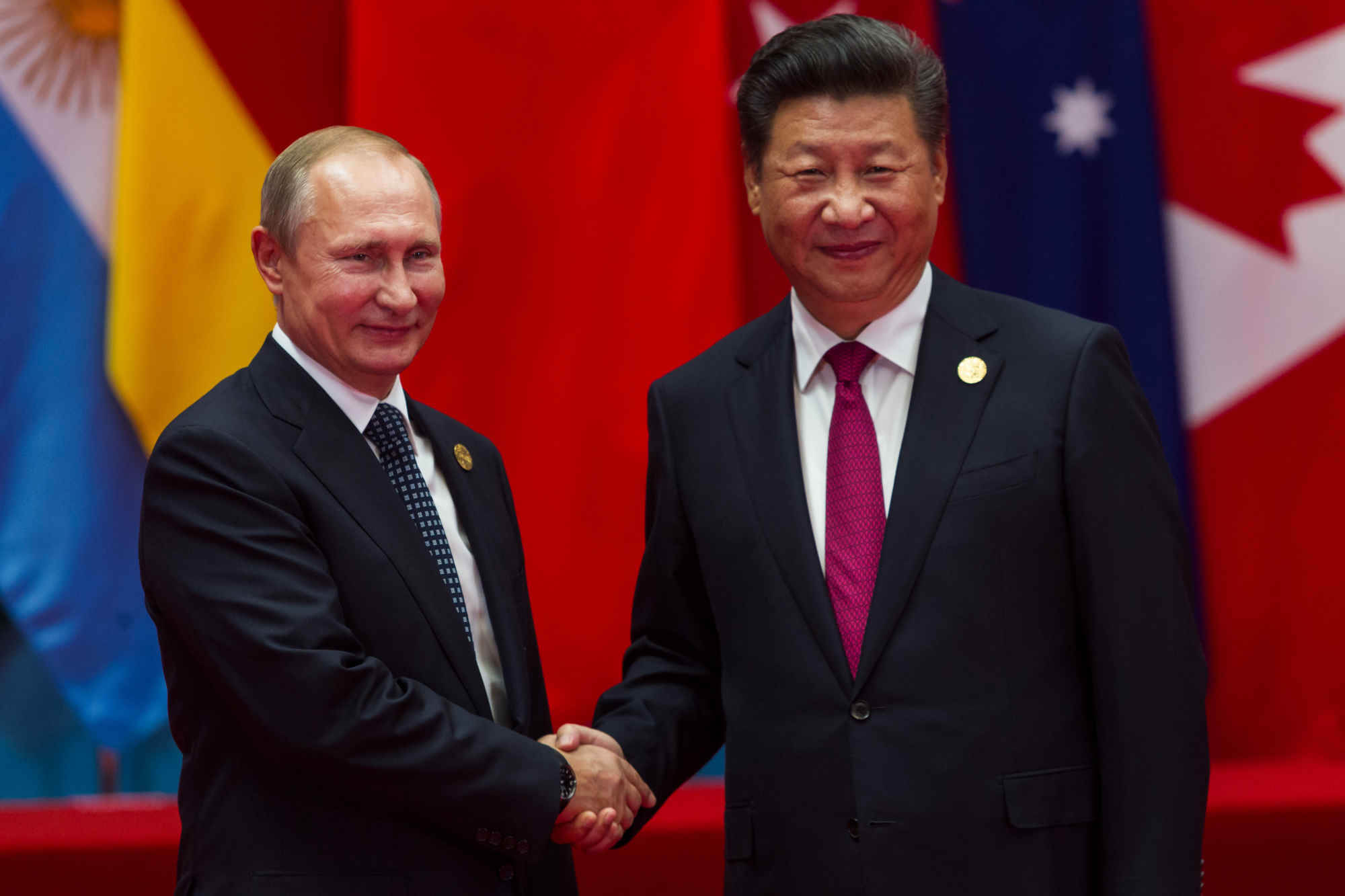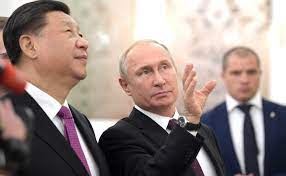With the Russian invasion of Ukraine in full sway, China’s plans to expand trade and fortify transportation ties with Central and Eastern Europe have been thrown into disarray. Yet, even though the Russian war on Ukraine poses a direct threat to Xi Jinping’s signature Belt and Road Initiative and harms China’s own economic interests in Ukraine, Chinese leaders have maintained their implicit support for their strategic partner, Russia.
Just before the invasion, the Belt and Road Initiative (BRI) appeared to have more promising prospects in Central Europe. On February 3rd, Xi Jinping spoke enthusiastically with Polish President Andrzej Duda about turning Poland into a logistics hub for a key artery of China's BRI, the New Eurasian Land Bridge.
Although the key rail link from Chengdu in China to Łódź in Poland circumvents Ukraine, other important arteries such as the direct line from Changsha in China's Hunan province to Chop in Western Ukraine and the Xian-Budapest line, which passes through Kyiv, are in doubt. Moreover, Poland, a NATO ally and EU member, is now playing a key role as a weapons conduit for Ukraine and has taken in over 2 million Ukrainian refugees. China’s perceived implicit support for the Russian invasion will likely dampen enthusiasm for greater Polish cooperation with the BRI. Despite signing an agreement with Beijing on the initiative in 2015, skepticism about relations with China had been growing in Poland, which has taken in over two million Ukrainian refugees.
Meanwhile, China’s own investments in Ukraine are facing the consequences of a protracted violent conflict. While an analysis by China’s Daily Economic News sought to downplay the impact of the war on most Chinese investments, Ukraine was described as one of the largest markets for Xinjiang Beiken Energy Engineering, a private Chinese energy technology company, which has a major partnership with Ukraine’s Naftogaz UkrGasVydobuvannya (UGV) in Poltava, also the target of major Russian attacks. Additionally, Chinese companies had invested in dredging the port of Mariupol, a city that Russian forces have nearly destroyed. Chinese wind power companies also invested in Mariupol, as well as in the port of Yuzhny, near Odesa, now effectively blockaded by Russian naval forces.
Although China’s trade with and investment in Ukraine is relatively modest, Xi’s choice to stand by Putin has been costly for the Belt and Road Initiative. China-Europe trade by rail is expected to fall by at least 35%. Prior to the Russian invasion, 90% of rail cargo went via the northern route through Russia and Belarus, but now major freight forwarders, such as Maersk and DHL, refuse to work in Russia. Rail experts expect it will take several years to recoup the decline in rail freight resulting from the Russian invasion of Ukraine.
One option is to prioritize the China-Central Asia-West Asia Economic Corridor route, which transits through Central Asian countries, the Caspian Sea region, Iran, and Turkey. This route has been relatively underdeveloped and terminals are not large enough now to accommodate trade redirected from the New Eurasian Land Bridge. Alternatively, China may focus on developing the Maritime Silk Road, especially cooperation with Iran and Pakistan.
Each of these options has its own challenges, however. China’s regional rival India has long been investing in Iran, which also signed a 25-year cooperation agreement with China, with a special focus on its Chabahar Port. Interest by both India and China could help foster regional trade with Central and South Asia, or, conversely lead to competition between Beijing and New Delhi for influence in Iran, potentially benefiting the latter. The Pakistani port city of Gwadar, a centerpiece of the China Pakistan Economic Corridor, is no model – in December 2021 it was the site of mass protests and thus far has not lived up to the hype around it as a key node in the Maritime Silk Road.
Now boasting the world’s largest navy, with a fleet of 355 vessels, China faces a strategic choice between positioning itself as a continental power or as a maritime power. Naval historian Bruce Elleman sees China’s support for Putin’s Ukraine invasion as tying Beijing to continental power, as opposed to becoming more integrated into a global maritime order. However, even if China opts for greater regional economic integration through maritime power, its domestic imperatives will set limits to its constructive participation. At this writing, Xi’s authoritarian zero-COVID strategy is further snarling supply chains due to lockdowns in Shanghai and several other key port cities.
Apart from economic troubles, political tensions with Europe are also growing. Prior to the Russian invasion of Ukraine, China already faced several challenges to its European diplomacy. Arctic states had grown wary of potential ulterior motives in Chinese investment and claims of being a "near-Arctic state." By 2021, China's framework for economic engagement with Europe—the 17+1 initiative (now 16+1 due to Lithuania’s departure)—was criticized for being a "zombie mechanism" due to its lack of results.
In this context, it is not surprising that Beijing has been unusually reticent about the BRI’s prospects in Europe of late. China’s grand connectivity schemes must address a growing number of unwelcome developments, such as deepening connections between European democracies and Taiwan, the unexpectedly strong outpouring of global support for Ukraine, and unprecedented Euro-Atlantic unity in response to the Russian invasion, and even greater Swedish and Finnish interest in joining NATO. In the short term, we may see a refocusing of effort, highlighting cooperation with the more pro-China countries like Serbia, which recently very publicly received an infusion of Chinese military aid.
The long-awaited April 1, 2022, EU-PRC summit produced no breakthroughs. For the EU, the priority was ending the Russian invasion of Ukraine, which China is seen as supporting tacitly. Despite interrupted trade with Europe, Xi told European leaders that China’s vision of “ a bridge of friendship and cooperation across the Eurasian continent” remains all the more relevant today.
Nevertheless, this remains a tough sell, especially in Central Europe, where Huo Yuzhen, China’s special representative to China-Central and Eastern Europe Cooperation, is leading a delegation. Huo’s daunting tasks are to reinvigorate cooperation between China and Central Europe and explain China’s policy on Russia’s invasion of Ukraine, which many Central Europeans consider to be an endorsement and an indicator of the potential threat China itself may pose to the region. Therefore, the Chinese envoy’s efforts are unlikely to fall on receptive ears, exposing the broader challenges to China’s standing in the region and the success of its grand connectivity plans.
This article originally appeared on the China Observers in Central and Eastern Europe (CHOICE) website.


